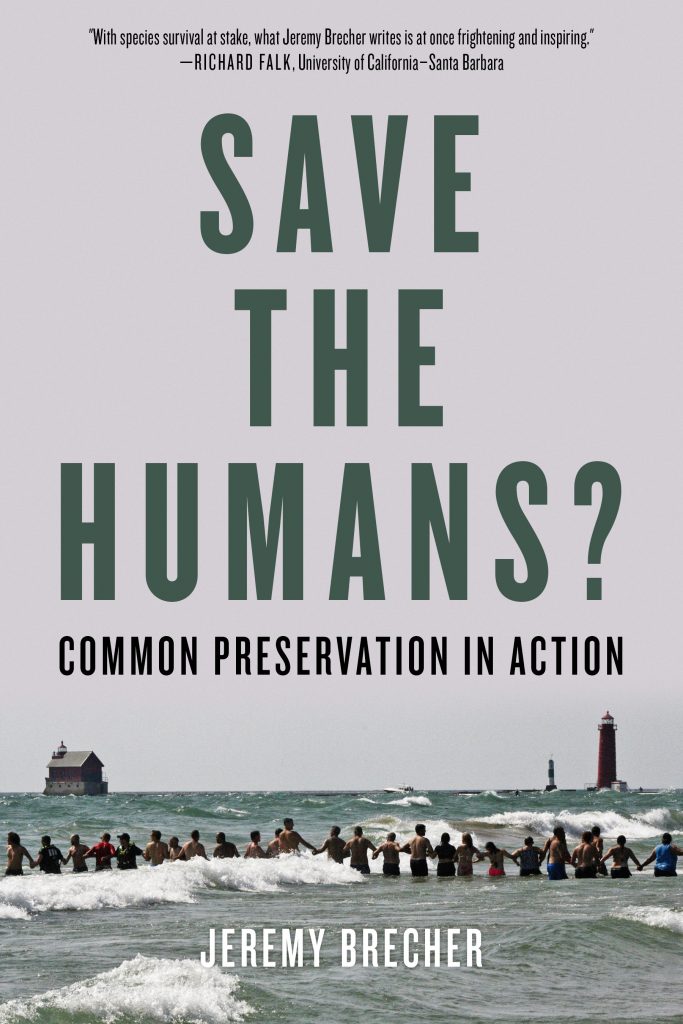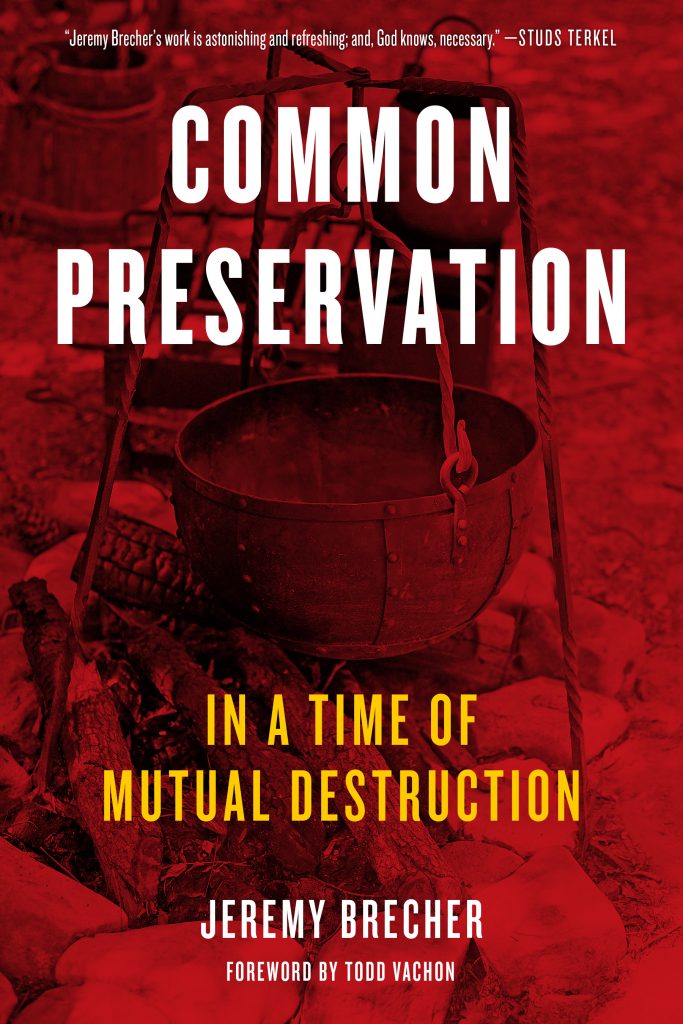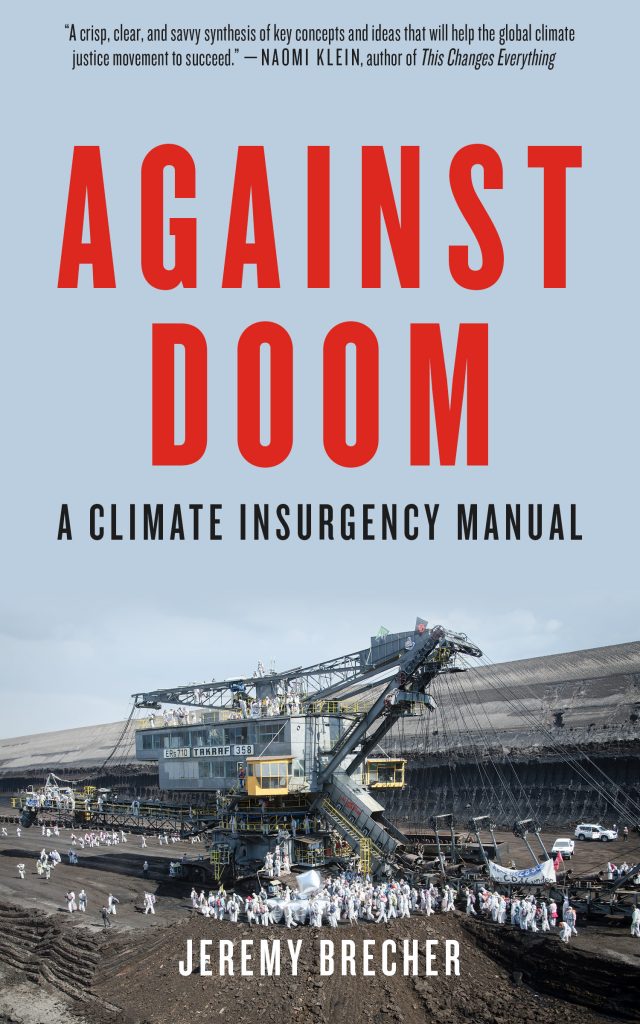By Jeremy Brecher, Senior Strategic Advisor, LNS Co-Founder
While the original Green New Deal congressional resolution primarily envisioned a program at the federal level, activists and governments in local, state, regional, and civil society arenas have gone ahead and implemented many of its programs. Federal and sub-federal actions can be synergistic, but they both require planning, resource mobilization, and the avoidance of false solutions.
Thanks for reading STRIKE!! Subscribe for free to receive new posts and support my work.
The original Green New Deal resolution took as its models not only the original New Deal but also the home front mobilization for World War II. A fully developed Green New Deal will need both the kind of federal initiative and strong federal agencies that transformed the American economy during World War II and the popular participation and decentralized creativity represented by the Green New Deal from Below.
The Green New Deal from Below can make a significant difference in reducing greenhouse gas pollution, creating good jobs, and countering injustice. It can help create the support and the building blocks for a national and even a global Green New Deal. But the accumulation of separate initiatives will not automatically culminate in adequate solutions. Green New Deal projects in different localities and different spheres need to hook up to strengthen each other to generate more extensive projects; to win support from the federal government; and ultimately to make the Green New Deal a national and global reality. A federal Green New Deal is necessary to fill the gaps that are difficult to close from below.
Cities and states are limited in their powers and resources. Financially, the federal government can and normally does run budget deficits; cities and states are in most cases constitutionally required to balance their budgets. The federal government can spend trillions of dollars annually and has almost unlimited capacity to borrow trillions more. The federal government owns more than 30% of the country’s land and has authority to use the power of eminent domain on the rest. It can issue or deny permits for any kind of fossil fuel extraction or infrastructure. The executive, legislative, and Judicial branches can regulate almost any kind of economic activity and can determine plans for transportation, energy, and other basic economic systems.
Many of the policies and programs necessary for a full Green New Deal require these federal powers. These include establishing financial incentives and disincentives; raising capital; implementing labor strategies; organizing funding for infrastructure such as transmission lines, railways, and pipelines; funding R&D; setting and monitoring energy efficiency standards for buildings, appliances, and equipment; training and retraining professionals and trades people; and setting industrial location policies.
Even with a full federal commitment to the Green New Deal, action “from below” will continue to be essential. Community-based renewables like rooftop solar collectors, energy use reduction like residential weatherization, mobilization of finance like revolving loan funds, and new patterns of consumption like shared bicycles can, with federal support, expand to a still greater role. And they can provide popular support for transition and a means to hold the institutions of transition accountable.
Meanwhile, Green New Deals from Below are taking some initial steps toward coordinating their programs on a larger scale. Programs for energy development and transportation are transcending city and state boundaries. Examples include the Northeast’s Regional Greenhouse Gas Initiative and the Kansas-Missouri Infrastructure Investment and Jobs Act for a regional rapid transit corridor integrated with affordable housing, green infrastructure, and jobs programs. Regional Green New Deals are being fought for by the Gulf States Green New Deal and other such groups. As the Green New Deal from Below receives greater recognition there will be increasing opportunities for coalitions of Green New Deal cities and states to act in common – and to demand that federal politicians and agencies support their doing so.
Planning
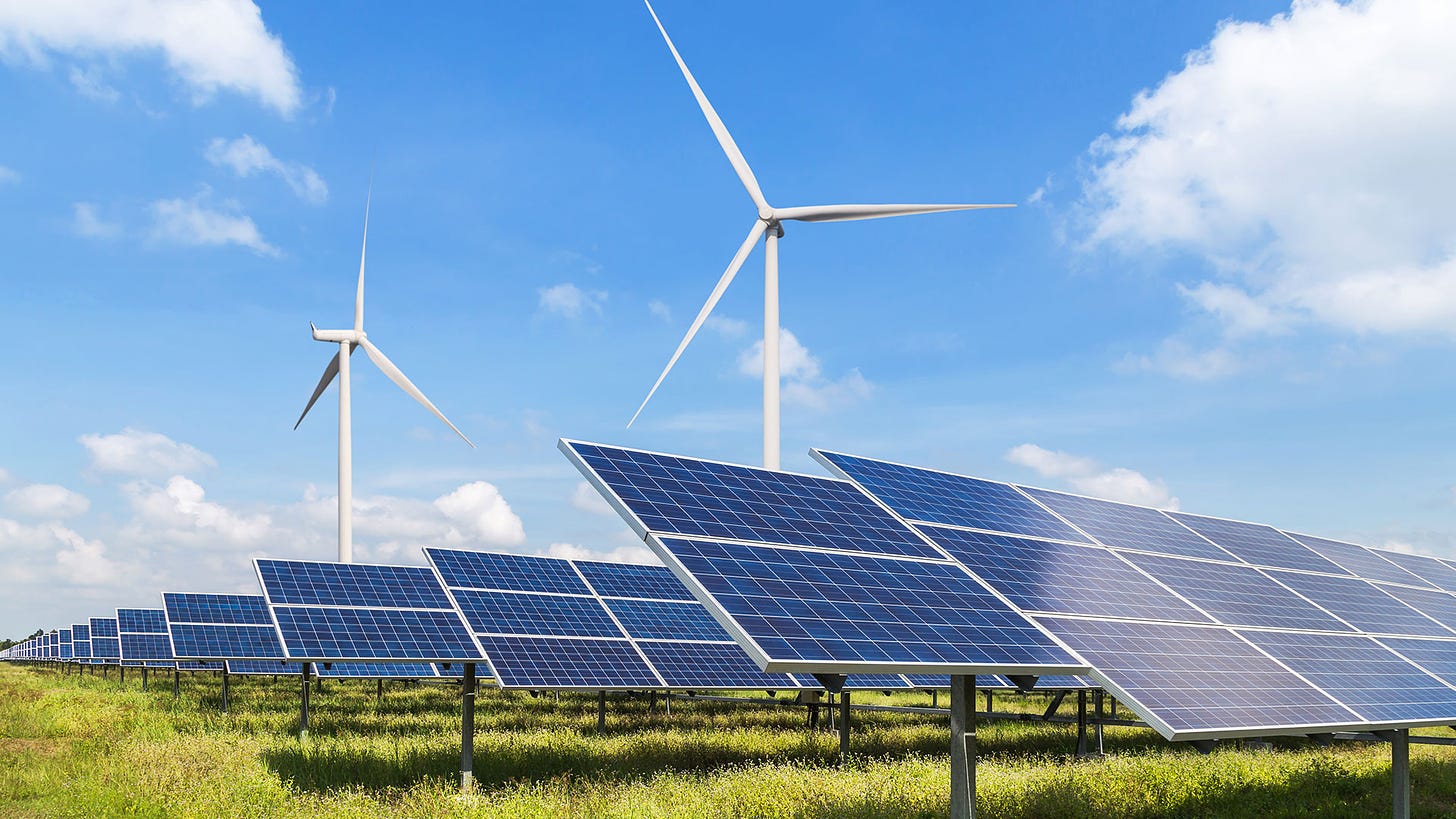
Adobe Stock
Many political programs are reactive. One of the key features of the Green New Deal is that it is proactive, and oriented toward the future. The original Green New Deal proposal was based on a ten-year mobilization to address long-festering problems in a way that would start to put the future of the climate, the economy, and social justice on a secure footing. The activities of the Green New Deal from Below are inevitably piecemeal, but they are shaped by that long-term vision.
Many aspects of the Green New Deal require national planning. The overall development of managed decline of fossil fuel burning with provision for a just transition will depend on national planning. So will the development of an electrical grid that can allocate various forms of renewable energy based on need and availability. Large-scale transportation systems like railroads require national planning. And such large-scale planning and investment requires national resource allocation to determine the quantity, speed, and sequencing of investment. That in turn requires agencies with the capacity for planning and investment.
Meanwhile, Green New Deals from Below are developing their programs on the basis of long-range planning in the public interest. This is most evident in the targets and timetables for greenhouse gas reduction that guide the great majority of Green New Deal programs. In few other areas of American life are there plans based on 30-year targets with short- and medium-term programs to reach them.
The approach to energy planning in cities like Los Angeles and states like Illinois contrasts with the way things are usually done in American politics. Much of US public policy at all levels is based in effect on offering money to private entrepreneurs in the hope that they will somehow do what is necessary for public benefit. The results are often calamitous. Projects are designed to maximize profit rather than the public good. And their results are often at cross-purposes with other social objectives and programs.
A prime example is the history of urban renewal, in which the planning power of cities was devolved to quasi-independent agencies often more responsive to developers than to the people who lived in the affected communities. The result was the destruction of urban neighborhoods; the displacement of their residents; the enrichment of developers; and the use of public money and legal powers to build luxury housing, commercial towers, sports stadiums, and convention centers, rather than the affordable housing, schools, and hospitals that ordinary residents so desperately needed. The outcome was often summed up in the phrase “Urban renewal means Negro renewal.”
Local Green New Deals offer a radically different approach to urban planning. They aim to put human needs, rather than developer profit, at the center of planning. They often shift control of decision-making, giving representatives of poor and neglected communities a voice and a vote. In the Boston Green New Deal this went as far as shutting down the long-established urban renewal agency and creating a new planning agency within city government. Transportation planning often aims to increase transit and reduce the burden of fossil fuel transportation emissions in low-income neighborhoods. Zoning changes make it easier to build affordable housing. And metropolitan planning seeks to regionally coordinate transportation, housing, and work in a way that reduces greenhouse gas emissions and local pollution while providing deprived people with access to jobs and amenities, good housing, and healthy air to breathe.
Green New Deals plan rather than just passing out loot. Planning for public purposes guides Green New Deal public investment. This is most obvious in the case of energy. While conventional energy policies are often based on issuing Requests for Proposals and seeing who bids, Green New Deal programs have first set targets and timetables for the transition away from fossil fuels, then designed concrete programs to realize them, and then started to implement those programs. Planning in the public interest is illustrated by the Illinois Climate and Equitable Jobs Act, which channels green energy investment into locations where fossil fuel facilities are being shut down. Public- rather than developer-led planning helps ensure that investment benefits the communities that need it most, rather than being steered by profit maximization. This is illustrated by programs in California and other states which are requiring 30 percent or more of their investment go to environmental justice communities.
Green New Deal from Below planning is marked by an integration of multiple objectives. For example, Good Food programs in California, Massachusetts, and elsewhere are designed to provide school children with healthy food, host communities with good jobs, local farmers with a steady market, and with environmentally sound, climate-protecting forms of agriculture. Similarly local green energy programs create local jobs and support environmental justice. Urban projects seek to combine transit, housing, and energy efficiency to meet community needs and simultaneously reduce greenhouse gas pollution.
Planning is also being used to protect workers and communities from unwanted side effects of climate and other Green New Deal policies. For example, the Illinois Climate and Equitable Jobs Act created a Displaced Energy Worker Bill of Rights with extended advance notice of closures as well as incentives for clean energy facilities to locate and invest where fossil fuel installations have shut down. That’s a long way from a neoliberal, laissez-faire approach that, instead of planning, abandons workers and communities to the tender mercies of the market.
While planning is often thought of as a top-down process, Green New Deal planning is highly participatory. Design of the Seattle Green New Deal, for example, involved representatives from more than 200 organizations, including labor unions, advocates from low income and communities of color, tribal nations, faith leaders, health care providers, businesses, environmental advocates, and clean energy experts. Frontline communities hold eight of the 19 seats on the Oversight Board that runs the program and allocates city tax money for Green New Deal projects. In Culver City, CA, planning for a bus and bike mobility project started with design of a website by three public commissions. A Community Project Advisory Committee solicited a wide range of input through meetings, community workshops, and social media – with 40,000 hits on its web and social media sites in three months. The project design went through four different designs based on public input before the final plan was determined.
It is often asked how Green New Deal programs will be paid for? The money is already coming in from a variety of sources.
Some of the funding for Green New Deals from Below comes from what may be called “Robin Hood strategies” – initiatives that take from the haves to provide programs that benefit the have-nots. For example, the Seattle Green New Deal is being paid for by a 2.4% “JumpStart Seattle” tax on salaries of at least $400,000 at companies with at least $1 billion in annual payroll (think Amazon). California’s 2022 climate legislation was paid for by the high tax rate on its wealthiest residents; the top 1% of earners paid nearly half of personal income-tax collections. State and municipal policy can also shift budget priorities from the likes of sports stadiums and amenities in wealthy neighborhoods to schools and affordable housing. Green Banks can take investors’ cash and channel it to Green New Deal-style projects.
Funding can also come from taxes and fees placed on fossil fuel polluters. The program to support Tonawanda NY and other towns after the closing of the Huntley power plant came from the Regional Greenhouse Gas Initiative, which requires payments from polluting utilities throughout the Northeast. A just transition initiative that narrowly failed to pass in the State of Washington would have established a fee on carbon emissions starting at $15 per ton and increasing by $2 per year until the state’s greenhouse gas reduction targets were met.
Federal programs like the 2021 American Rescue Plan Act, the 2021 Infrastructure Investment and Jobs Act, and the 2022 Inflation Reduction Act are making substantial sums available that are being captured for use in Green New Deal programs. For example, the city of Boston is using $350 million in federal funding from the American Rescue Plan Act “to accelerate a Green New Deal for Boston.”[1] The Green New Deal Network has developed a program to help local communities and unions access such funds. In April 2023 Sen. Ed Markey and Rep. Alexandria Ocasio Cortez published a Green New Deal Implementation Guide to use these federal programs to “bring the Green New Deal to life.”[2]
Finally, Green New Deal programs are often paid for by the money saved on extracting, purchasing, and burning fossil fuels. Renewable energy is now in many instances far cheaper than fossil fuel energy even when climate and social costs are disregarded. Shutting down a coal-fired power plant and replacing it with solar and wind power often now produces not a cost but a savings – witness the hundreds of coal plants that have been shut down by their owners because they were uncompetitive and therefore unprofitable. The Green New Deal energy transition often is paying for itself; one Denver Housing Authority solar garden reduced the electric bills of low-income residents by up to 20%. Similarly, insulating schools, public housing, and municipal buildings is likely to significantly lower their energy costs.
Countering False Solutions
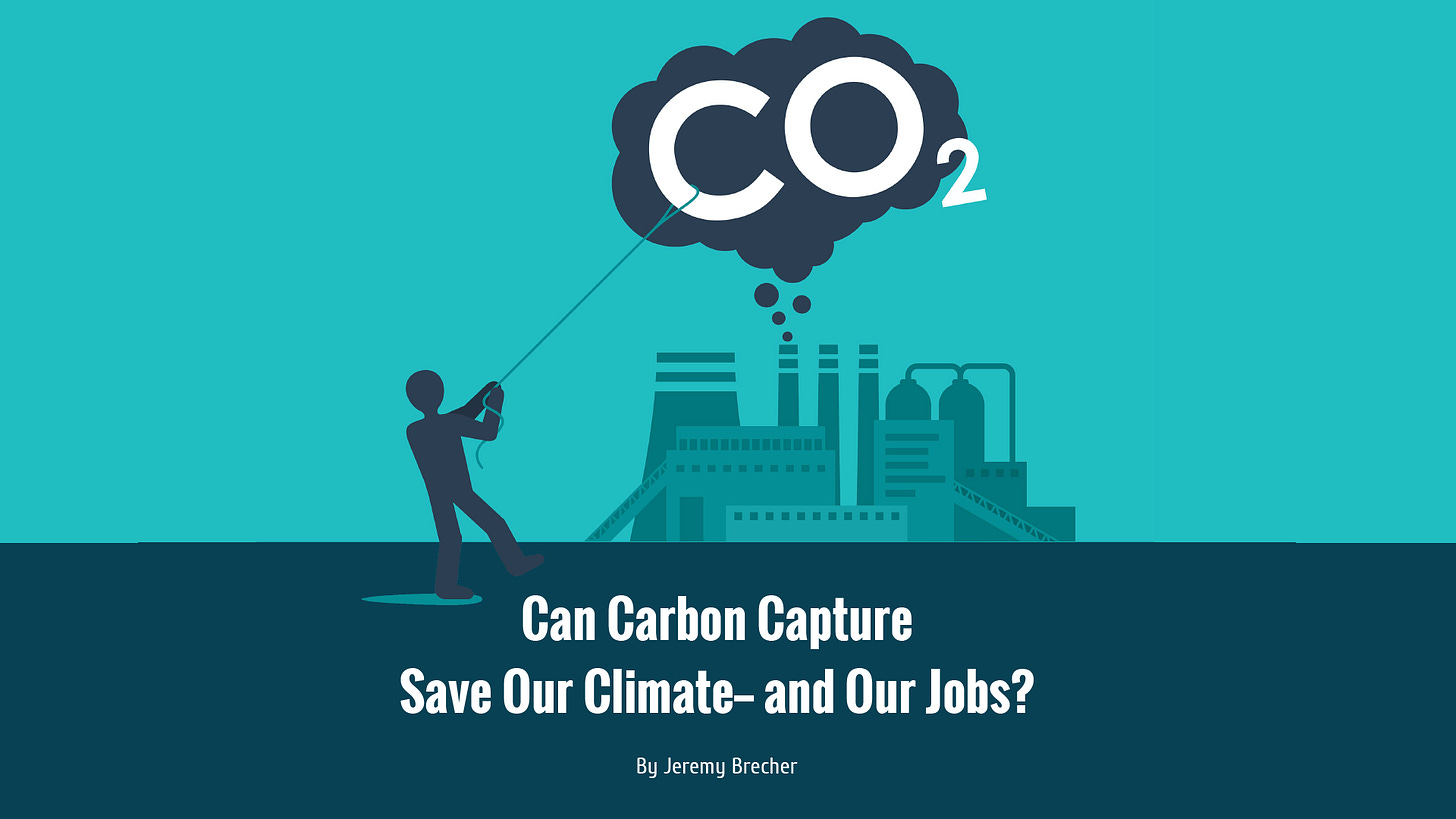
Green New Deals from Below generally pursue the basic strategies laid out by climate science for countering climate change: increase climate-safe energy; reduce energy usage; and rapidly reduce the burning of fossil fuels. These strategies are not only effective; they are cost-effective.
Unfortunately, there are many other purported fixes that have the effect and in some cases the intent of perpetuating rather than ending the burning of fossil fuels. These include various ways of attempting to capture greenhouse gasses after they have been produced; sucking greenhouse gases out of the air after they have been released; adding hydrogen to the fossil fuel mix; and expanding the use of nuclear energy. While there is highly publicized speculation on the potentials of these technologies, overwhelming evidence shows that none of them are as effective or as cost effective for an emergency response to the climate threat as renewable energy, energy efficiency, and managed decline of fossil fuel burning.
While Green New Deals from Below have rarely pursued such dubious programs, the proponents of such “greenwashing” programs have often tried to incorporate them in climate legislation and policies, especially at the state level. In California and Illinois, Green New Deal legislation has been amended to slow the phaseout of nuclear power plants. Extension of existing nuclear power plants, coupled with serious efforts to reduce fossil fuel burning, was accepted in these two cases as a means of maintaining existing energy supply during a transition to climate-safe energy.
Capturing carbon, either from smokestacks after burning or by sucking it out of the air, has been a highly touted but unproven method for continuing to burn fossil fuels without aggravating climate change.[3] In California there has been an unresolved struggle over including carbon capture programs in climate legislation – resulting in legislation assigning a state agency to evaluate and set standards for carbon capture subsidies.
There are, on the other hand, natural forms of carbon capture that have won overwhelming support among Green New Dealers – as well as demonstrable effectiveness in reducing greenhouse gases in the atmosphere. These include forests, improved agricultural practices, and cultivation of seaweed. Improving the urban forest has been a special focus of local Green New Deals.
As the Biden administration has promoted the development of “hydrogen hubs” around the country, local climate and Green New Deal advocates are struggling with whether this represents genuine climate protection and whether they should participate in such efforts. In Connecticut, the Connecticut Green Bank initiated exploration of a hydrogen hub, but the labor-climate coalition the Connecticut Roundtable on Climate and Jobs passed a resolution to support hydrogen development only in cases where it was demonstrably not greenwashing, but beneficial for climate protection.
The opponents of the Green New Deal often talk the climate talk without walking the climate walk. It is politically easy to advocate for new clean energy projects or “clean” fossil fuels while allowing the continuation or expansion of climate-and-health destroying fossil fuel burning. The question of how to relate to such efforts is increasingly pressing for Green New Deals.
Anything but rapid reduction of GHG emissions will continue to accelerate climate destruction.
Green New Deals are providing a genuine and effective path for climate protection and restoration. The Green New Deal from Below shows what real climate protection looks like.
The question, “should Green New Deal policies by implemented from above or from below” is rather like the question, “Should I wash my hands or my feet?” The obvious answer is, “both!” And for both it is essential that the Green New Deals implement planning, resource mobilization, and genuine solutions.
[1] “Mayor Wu Unveils First City Budget and $350 Million Federal Spending Plan,” Boston.gov April 13, 2022. https://www.boston.gov/news/mayor-wu-unveils-first-city-budget-and-350-million-federal-spending-plan
[2] “Delivering a Green New Deal: How the Inflation Reduction Act and Bipartisan Infrastructure Law Help Bring the Green New Deal to Life,” from the Offices of Senator Ed Markey & Congresswoman Alexandria Ocasio-Cortez https://acrobat.adobe.com/id/urn:aaid:sc:us:a42b0396-b6ba-420f-9b29-7017825f5cdc?viewer%21megaVerb=group-discover
[3] For an evaluation of carbon capture technologies, see Jeremy Brecher, “Can Carbon Capture Save Our Climate – and Our Jobs?” Background Paper, Labor Network for Sustainability, June 8, 2021. https://www.labor4sustainability.org/files/LNS_CarbonCapture_06082021.pdf
Is there a way to refer here to a credible source that debunks or at least calls into question, this kind of “carbon capture”?



